Welcome back to your refresher series on The Stormlight Archive! As we prepare for the release of Rhythm of War, we’ll be doing our best to help you remember who’s who and what’s what from the past. Last week, we did a Stormfather’s-eye view of the history of Roshar, from creation to a couple of centuries before the “current events.” This week, we’ll take a look at those pivotal characters, the Ten Heralds, beginning with their birth and going right up through what we know of their current condition and whereabouts.
Also, speculation, of course, but always appropriately marked. This time, the speculation is identified as “Theory Connection” in each of the Heralds’ descriptions. Corrections and additions—both to the information and the speculation—are welcome in the comments!
This series will contain spoilers for all of The Stormlight Archive published so far, and will occasionally draw on Words of Brandon for supporting information. I’ll do my best to avoid spoilers for other series, or to mark them if they really need to be included. I make no promises about the comment section; however, I’d request that if you want to include spoilers in a comment, please try to white-text them or at least tag them as spoilers so people can skip your comment.
Advent
As we mentioned last week, most of the Heralds were born on Ashyn prior to humanity’s migration to Roshar. The possible exception to this is Shalash, who might have been born after the move. In later legend and lore, Ashyn became known as the Tranquiline Halls, both their home and their heaven, whence they had been driven by the Voidbringers.
Oathpact
Sometime in their first few decades on Roshar, as conflict arose between the newly-arrived humans and the native singers, some of the singers turned to Odium for aid. In order to prevent humanity from being wiped out on this new home, ten of the humans went to Honor, seeking a means to prevent the Fused from destroying them. There are indications that Ishar, the most knowledgeable regarding theories of magic, was the one who figured out how it would work, if Honor would grant them the powers needed.
The exact mechanic of the Oathpact isn’t clear as yet. The effect, though, was that the ten humans, with the powers and the Honorblades given by Honor and the strength of their mutual vow, were able to bind the Fused singers to the planet Braize. So long as they all held together, this binding kept the Fused away from the humans; it also bound all of Odium’s Voidspren to the same planet, leaving Roshar to the guidance of Honor and Cultivation.
Buy the Book
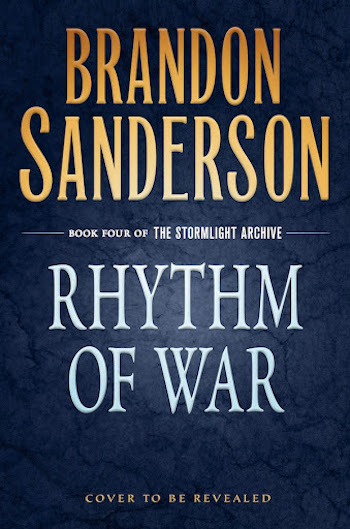

Rhythm of War
As Ashyn became the Tranquiline Halls in legend, so Braize became Damnation—and it seems to be well-named. Though the Heralds were made Cognitive Shadows as part of the Oathpact, they still had bodies which could suffer torment, and of course the Fused and the Voidspren figured that out. With both Fused and Heralds bound to the same planet, it became a vicious game of hide-and-seek; once a Herald was found, the torture began. Helped by one another’s strength through the Oathpact, the Heralds withstood the torment for centuries before one of them broke and agreed to a return. Once that happened, all were freed; fortunately for humanity, the movement took time, and the Heralds were able to return first and begin preparing for what became known as a Desolation.
War descended upon the planet, with the Heralds leading the humans and the Fused leading the singers. (Human vs. singer for the most part, anyway; there were definitely times when humans joined Odium’s side. We don’t know if there were ever times when singers chose to join the humans against Odium.) When either a Fused or a Herald died, they returned to Braize to await the results; it seems (though we don’t have proof, that I know of) that a Desolation ended when all the Fused had been killed, whereupon victory was declared and any surviving Heralds returned to Braize to reinstate the imprisonment. Then the cycle began again.
This scenario played out again and again, for approximately three thousand years, until the Heralds could bear it no longer. During that time, each had been the one to break under torture except for Talenel. When at last there came a Desolation, hard on the heels of the previous, in which Taln was the only Herald to die, the other nine abandoned their Honorblades and their vows, hoping that he could hold out long enough to make it all go away (or something—I don’t think they had much of a goal in mind, other than not going back to Braize at any cost).
From that point on, though the Heralds continued to be of great significance to most of the human populations of Roshar, they largely vanished from active involvement in history for the next 4500 years. Let’s take a look at the individuals: what we know of their history, their place in tradition, and their current identity.
Individual Heralds
We’ll take them in the “Vorin Tradition” order, using the numbering system based on their names. If you’re looking closely, you’ll notice that the numbers are also used in the calendar system, and as the names of the gas planets. Each Herald has a number of different concepts associated with them; the two I’ll primarily focus on here are their role and their divine attributes. Please note that these are not necessarily characteristics of the individual, but are traditional Vorin associations.
Right up front, I’m going to explain one of my current not-too-loony theories regarding the Heralds, so I can make comments about it regarding the individuals.
He seemed so cold. Like a shadow caused by heat and light falling on someone honorable and true, casting this black imitation behind.
This is from the Prelude to The Stormlight Archive; Kalak is observing Jezrien as he’s explaining the plan to leave their Honorblades behind and let Talenel bear the burden of the Oathpact alone. At the time, it seemed highly symbolic, but… of what? In retrospect, it seems to me quite possible that we can see the nine Heralds who abandoned the Oathpact becoming the opposite of what they once represented.
Jezrien
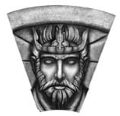 Jezrien, Vorin name Jezerezeh
Jezrien, Vorin name Jezerezeh
Role: the King; also known as the Herald of Kings
Divine Attributes: Protecting, Leading
Jezrien is (shockingly enough) associated with the number Jes, or one. In various Rosharan traditions, he is also called Yaezir and Yaysi During the Heraldic Epochs, he looked to be a man “barely into his thirtieth year,” regal, with a neatly trimmed, short black beard. He is darker-skinned than most Alethi, but not enough that anyone thinks of him as Makabaki. Sanderson has said that until Aharietiam, the Heralds continued to look the way they had when they began the Oathpact, which would imply that he was thirty — but we also know that his daughter is one of the Heralds. I suppose it’s just possible that he fathered a child at 14, and allowed his 15-year-old daughter to become a Herald… but I think it’s more likely that he simply looked younger than his actual age. I sure hope so, anyway.
Jezrien was apparently an actual king at the time of the Oathpact, based on Kalak’s thoughts of him during the Prelude. The powers he received from Honor granted him control of Adhesion (controlling pressure and vacuum) and Gravitation (gravity’s effect on or by an object); those granted the same powers by the spren as Knights Radiant would be called Windrunners. I would note that we haven’t yet observed any control of Adhesion that seems directly connected to using a vacuum, so I’m really curious about what that might look like!
Current Events: At some unknown point, Jezrien gravitated to Kholinar. We first see him in Dalinar’s flashback, eight years ago, as the beggar Ahu in the Beggars’ Porch behind the Kholin palace. There, and later in Szeth’s Prologue view, he appears as an older man with a long gray and black beard. He doesn’t make much sense, though he clearly (to us) remembers his early years on Roshar as well as the torture on Braize.
He is now dead, murdered by Moash with some kind of special knife that … well, we’re not sure what it did. Sucked in his Investiture? His soul? In any case, it removed him from the remains of the Oathpact, and he seems to be the kind of dead that does not involve returning to Braize. We can only hope that his soul is free to go Beyond, now.
Theory Connection: Jezrien, the King, became the crazy beggar; the man who represented Protecting and Leading ended his days cowering and questioning.
Nale
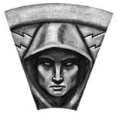 Nale, Vorin name Nalan
Nale, Vorin name Nalan
Role: the Judge, also known as the Herald of Justice
Divine Attributes: Just, Confident
Nalan is associated with the number Nan, or two. He is also known as Nin or Nakku in other traditions. He is sufficiently dark-skinned that most who see him assume he is of Makabaki origin. His primary distinguishing feature is a pale crescent-shaped birthmark on his cheek. We know nothing of his life before the Oathpact.
The powers he received, later held by the order of Skybreakers, allowed him to manipulate Gravitation (the effect of gravity on or by an object) and Division (called the surge of destruction and decay). While we know much of what a Skybreaker can do with Gravitation, we have not yet seen Division being used much. The sole demonstration will be addressed under the next Herald.
We don’t know exactly when it happened, but Nale is the only Herald to formally join an order of Knights Radiant, becoming a Skybreaker himself. On a guess, this would have been after Aharietiam; for certain, though, it was before the Recreance. Beginning some time after the Recreance, he led the Skybreakers in an effort to ensure that no more Radiants would arise. His method seems to have involved a network of information which would tell him if anyone, anywhere in the world, was doing odd things that might indicate a nascent Radiant. He would then find the person, research their life, and find some crime of which to accuse them. As judge, jury, and executioner, he would kill them—but always in accordance with some law of the land, however obscure or outdated it might be. Also, at some point he retrieved the Honorblade he had left behind after the Last Desolation; this event is recent enough that the Shin have drawings of it, but long enough that Szeth considers it “long ago.”
Current Events: By the time we observe this behavior, he clearly pays little attention to law-breaking or justice in general; he is concerned only with finding and destroying rising Knights Radiant. We see him kill Ym, a gentle and generous cobbler somewhere in Iri, for the 40-years-past “crime” of having been paid to deliver a bottle of wine which was, unbeknownst to him, poisoned; the person who received the wine died, and so Nale kills the cobbler for being “an accessory to murder.” He pursues Lift in Azir, obtaining a leave of execution against her for “thieving, trespassing in the Prime’s palace, and interrupting a holy conclave in session”—though the viziers are appalled that he would execute her for such things. Later, he sends minions to execute a woman who runs an orphanage in Yeddaw, where (as always) he obtained the proper paperwork to execute her for money laundering; when his minions take on the wrong person (in more ways than one!) he comes to do the job himself.
This is his turning point, as Lift makes him face the fact that he has failed in his stated objective of preventing further Desolations. He leaves off trying to kill Radiants, and goes to consult with Ishar as to the next step. During the battle of Thaylen City, he reveals that he and the rest of the Skybreakers will obey the laws of the Fused, though he intends to return to Szeth and train him in the use of Division.
Theory Connection: Nalan, the Judge, became unjust, twisting the law to his own ends and ignoring any injustice that didn’t suit his purposes; the man who represented justice and confidence realizes that he has been deeply unjust, has no idea what to do, and breaks down in tears.
Chanarach
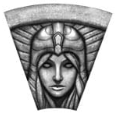 Chanarach, Vorin name Chanaranach
Chanarach, Vorin name Chanaranach
Role: the Guard
Divine Attributes: Brave, Obedient
Chanarach, often known as Chana, is associated with the number Chach, or three. We know a total of nothing about her appearance or her history. Vorin tradition portrays her as a young woman, but we have no way of knowing whether that’s based on any truth.
As a Herald, her Surges were Division (division and decay) and Abrasion (friction). The order of Dustbringers use these same powers, and so we have one single example of a Dusbringer using Division: In Oathbringer chapter 107, Malata uses Division to burn designs into a wooden tabletop, demonstrating detailed control of the flame she uses.
Current Events: Unknown
Theory Connection: Back in June 2017, I suggested that perhaps the assassin Liss (Words of Radiance Prologue) is Chana. While this is not confirmed, Peter Ahlstrom did say that Chana had been seen on screen by at least one character at least one time in the first two books. While I suspect that my suggestion was initially brought on by the idea that the Guard would be good with any kind of a blade, the theory tie-in is that idea of opposites: the Guard has become an assassin, and the woman who represented bravery and obedience now hides her identity and sells her skills to the highest bidder. Note that if this is the case, we would have a description: she “could have been Alethi. Or Veden. Or Bav. Depending on which part of her accent she chose to emphasize. Long dark hair, worn loose, and a plump, attractive figure made her distinctive in all the right ways.” Now I guess we’ll have to wait and see.
Vedel
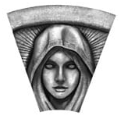 Vedel, Vorin name Vedeledev
Vedel, Vorin name Vedeledev
Role: the Healer
Divine Attributes: Loving, Healing
Vedel, associated with the number Vev or four, is another Herald about whom very little is known. She apparently was a very skilled healer, since her first task on returning from Braize was always to train the surgeons in healing arts. For reasons we don’t know, “golden keys” are part of her traditional imagery. The only thing we know of her appearance is that modern Rosharans would see her as Alethi. While we do have a (gorgeous!) painting of her, we should remember that this is intended to be “in-world art” and is more a portrayal of Vorin tradition than the actual person.
Her Heraldic powers, like the Edgedancers who follow her, are manipulation of Abrasion (friction, either increased or decreased) and Progression (growth, healing, regrowth).
Current Events: Unknown
Theory Connection: Taravangian, having concluded that his ardent Dova must be a Herald because she knows too many things she shouldn’t, believes her to be Battar. According to my theory, Vedel is the more probable candidate: the Healer helps kill, and the woman who represents loving and healing is draining people’s lives for the sake of a little piece of information they might be able to provide. Ironically, the people being murdered for the death rattles are “the terminally sick, the forgotten, and the lowly”—the very people the Edgedancers most seek to aid.
Pailiah
 Pailiah, Vorin name Pailiah
Pailiah, Vorin name Pailiah
Role: the Scholar
Divine Attributes: Learned, Giving
Pailiah, her actual given name, is also nicknamed Pali, and is associated with the number Palah, or five. Like the previous two, very little is known about her past or her appearance. She likely was really a scholar, but that’s about all we can say. The Palanaeum in Kharbranth, the greatest library on Roshar, is named for her.
As a Herald, she was able to manipulate Progression (growth, healing, and regrowth) and Illumination (light, sound, various wavelengths), the skills later held by the Truthwatchers. While we know the Truthwatchers can heal much like the Edgedancers can, we don’t yet have enough information to know whether Illumination works the same for the Truthwatchers and the Lightweavers.
Current Events: Uncertain. At one point Sanderson had stated that the elderly ardent seen by Shallan in the lower levels of the Palanaeum was actually Pailiah herself:
She didn’t look in Shallan’s direction as she turned between two rows of shelves, her lantern’s light shining out through the spaces between the books. Lit that way—with her figure hidden but the light streaming between the shelves—it looked as if one of the Heralds themselves were walking through the stacks.
That certainly seems to have been Significant, right? Later on, however, Sanderson walked back that confirmation, and would only say that there was a Herald in close proximity to Taravangian, but not one regularly seen on screen. (So, Adrotagia, Mrall, and Maben are ruled out, I guess?) He also said that there had been other Heralds around him in the past, but only one directly influencing him right now. This is pretty sketchy, but it’s possible that Pailaih really is the ardent in the library, and is just not influencing or interacting with Taravangian any more, leaving the “only one” as Dova. Shaky ground, certainly.
Theory Connection: I’m not sure Pali fits into my theory at this point. If she really is the ardent, that would seem consistent with her role as Scholar, rather than the opposite, so… I dunno? On the other hand, an anti-scholar in the Palanaeum messing with the books could be a Thing, maybe. This one is really too dodgy to play.
Shalash
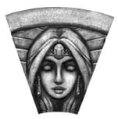 Shalash, Vorin name Shalash
Shalash, Vorin name Shalash
Role: the Artist, also called the Herald of Beauty
Divine Attributes: Creative, Honest
Shalash, again her real name, is commonly nicknamed Ash, and is associated with the number Shash, or six. She is the youngest of the Heralds, and unlike the others may have been born after the human flight to Roshar. She is tall and lean, with dark skin and long black hair; her eyes are a violet so pale as to be nearly white, and are rounder like the Shin rather than having the usual Rosharan epicanthic fold. Traditional Vorin iconography depicts her with a brush and a mask (or more than one) as symbols of creativity.
She is also Jezrien’s daughter, and therefore a princess by birth. Given that Jezrien appears to be only about thirty—though as mentioned above, he had to be older than that—I can’t help wondering how old she actually was when she took up the Oathpact. Twenty, maybe? Younger? In the scenes where her appearance is addressed, she is never presented as being a girl; she’s always a woman. So… probably not much younger than twenty, in any case. Also, probably not much older, unless Jezrien was fathering children at a very young age. (Okay, I also have to wonder what kind of father would condemn his daughter to this kind of cycle, but I don’t suppose they really knew what they were getting into.) There is a possible indication of romantic involvement between Ash and Taln, primarily seen in her thoughts when she finally finds Taln in Thaylen City:
Ash looked at his fingers, thick and callused. Thousands of years could come and pass, and she could lose lifetimes to the dream, but those hands … she’d never forget those hands.
Call me a hopeless romantic, but that totally screams Relationship to me.
Ash’s Heraldic abilities grant manipulation of Illumination (light, sound, various wavelengths) and Transformation (soulcasting). As these are also used by Lightweavers, we’ve seen a fair amount of the former, and some of the latter, demonstrated in the books already.
Current Events: Our first look at Ash came in the seventh Interlude in The Way of Kings, in which one of her servants nervously accompanies her on a mission to destroy artwork in the home of a high Emuli sage. While it’s not really clear in that Interlude precisely which art she’s after, it’s spelled out more clearly as the books progress, and in an Oathbringer Interlude, she is lured into action by Mraize the Ghostblood, who acquired an extremely famous painting of her in an effort to entrap her. We also get her own thoughts later in Oathbringer. She doesn’t just go around randomly destroying art: she specifically destroys any depictions of herself, objecting strenuously to being revered, worshiped, sworn by, or in any other way honored. It’s clear that she feels horribly guilty about breaking the Oathpact, and equally or more guilty about abandoning Taln to bear the torment alone.
At the end of Oathbringer, she is seen attempting to get him out of Thaylen City, intending to find Ishar and see if he’d know what to do. Her plans are short-circuited by the murder of her father; enough of the Oathpact remains that they can still feel one another to some extent, and she recognizes this death as different from the past. It is such a shock to her that she passes out—but not before she recognizes Hoid’s drawing style in the highly accurate sketch of herself that Jasnah is holding.
Due to this recognition, it is probable that the two Heralds were brought back to Urithiru with the Alethi after things settled down.
Theory Connection: Fairly obviously, the Artist has turned to the destruction of art (very specific art); the woman who represented creativity and honesty now spends her time seeking and destroying any artwork representing herself as a Herald, and she wears any number of disguises to get into the places she hears of those artworks existing.
Battar
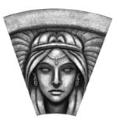 Battar, Vorin name Battah
Battar, Vorin name Battah
Role: the Counselor
Divine Attributes: Wise, Careful
And once again, we know very little about this Herald. Associated with the number Betab, or seven, we have no history beyond what is commonly known about the Heralds as a group. We could guess that she was one of Jezrien’s close council, but that would just be guessing.
As a Herald, she was given the Surges of Transformation (soulcasting) and Transportation (motion and realmatic transition). From observing Jasnah, we can see how the order of Elsecallers use these surges… at least to some extent. While Soulcasting was most commonly used in the books to create food or form protective stone buildings and walls, Jasnah demonstrated multiple wartime uses for someone who didn’t need a fabrial: turning people to various substances, making stone steps out of air, and even making a solid metal city wall from air. She may have also demonstrated “motion” during the Thaylen City battle, the way she was flinging soldiers around—or that might have just been the enhanced strength of “live” Shardplate.
Current Events: Taravangian has concluded that his ardent Dova, who warned them of the coming Desolation, is actually the Herald Battar. It’s possible he’s correct, or it’s possible she’s a different Herald than he thinks.
Theory Connection: If Battar is indeed disguised as Dova, the connection would be similar to Vedel but IMO a little less stark. As Counselor, she might still be giving counsel, but this time not in a way that actively protects humanity as a whole. Alternatively (since we don’t know much of Dova’s actions) she may be trying to avoid giving any counsel, and hides in the hospital collecting death rattles for Taravangian. I don’t really have a lot of support for this one, but that’s mostly because we know so little about either Battar or Dova.
Kalak
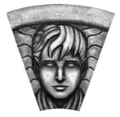 Kalak, Vorin name Kelek
Kalak, Vorin name Kelek
Role: the Maker
Divine Attributes: Resolute, Builder
Kalak, also called Kelek, Kellai, and sometimes credited with being the Stormfather, is associated with the number Kak, or eight. Once again, the palindromic name is actually his given name; it seems that the Vorins had a solid source for their fascination with symmetry. There is solid evidence that the second man seen with Elhokar at the Prologue treaty feast is Kalak: when Jasnah overhears them, they speak as though they belong to the same small group, the conversation supports the idea that they are Heralds, and we know (that crescent birthmark!) that Nale is one of the two. If they are both Heralds, the second has to be Kalak, since we know where all the other men are.
Going with that assumption, then, he is described as a “thinner, Alethi-looking man” by Szeth; Jasnah merely describes him as “the shorter of the two men—he could have been Alethi.” (Oddly enough, I have to force myself to remember that this likely means black hair; for some reason I always picture him as sandy-haired, and I can only blame it on the chapter icons.) Like Chana, he is generally depicted as quite young but is, at the very least, older than Shalash. Which is not to say that they aren’t closer to her age than others; just because they were born on Ashyn doesn’t mean they were adults when they moved. However, neither Szeth nor Jasnah notes any youthful appearance, so it’s entirely possible that he was more thirty-something than twenty-something when he joined the Oathpact.
He seems to be a nervous sort, at least in the conversation Jasnah overheard. He worries that Ash is getting worse, and that he thinks he’s getting worse. Even more, he worries that “that creature carries my lord’s own Blade.” I can only assume he is referring to Szeth carrying Jezrien’s Honorblade, and that he can sense its presence through the Oathpact. (Which makes me wonder… do they actually know that Jezrien is over there at the Beggars’ Feast? We haven’t seen much of their movement that night, other than sitting with Elhokar and talking in the hallway. I guess we have two more Prologues to go; maybe we’ll learn more about them.)
If my assumption is correct, it’s certainly interesting that he refers to Jezrien as “my lord.” Is that just an artifact of Jezrien having been his king originally, and having continued leadership among the Heralds? Or is it something more personal? Kalak’s role is “the Maker,” but we have little idea what that’s supposed to mean. The one clue we have is that, in his litany of return, Talenel says that “Kalak will teach you to cast bronze, if you have forgotten this” and goes on to talk about casting vs. forging weapons. This seems to imply that Kalak was skilled in metalworking, though “blacksmith” doesn’t sound quite right for the group of people the Stormfather implies were involved in the Oathpact.
As to his Heraldic abilities… we don’t know much. He held the Surges Transportation (motion and realmatic transition) and Cohesion (strong axial interconnection), as do the Willshapers who will follow him. Presumably he was able to shift between realms with relative facility, though we haven’t seen that happening yet. Cohesion is demonstrated in one of Dalinar’s visions (Oathbringer, Chapter 38) when a Stoneward reshapes the stone of a steep cliff to provide handholds and steps for Dalinar’s men to escape. (Note that there is a known continuity error in this passage: the Stormfather tells Dalinar that the Surge which changed the stone was the other one he could learn, but a Bondsmith doesn’t use Cohesion.)
Current Events: As we saw above, at the time of the treaty feast Kalak was hanging out with Nale. We don’t know if that was a short-term or long-term thing, but by the time we see Nale in action again (the Ym Interlude) Kalak doesn’t seem to be with him. We don’t have any clues as to where he is these days.
Theory Connection: To truly fit the pattern, the Maker ought to be going around breaking things, and we see no evidence of that. However, the opposite of the attribute “Resolute” is certainly demonstrated—he seems worried, uncertain, and… well, irresolute.
Talenel
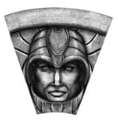 Talenel, Vorin name Talenelat
Talenel, Vorin name Talenelat
Role: the Soldier, also known as the Herald of War
Divine Attributes: Dependable, Resourceful
Associated with the number Tanat, or nine, Talenel is more frequently called by his nickname Taln. He is also known as Stonesinew, which might be linked to the Stonewards but more probably is an acknowledgement of his great strength in battle. In Vorin tradition, he is also called The Bearer of Agonies—though they little know how fully he earned that title. He is described as a large man, having dark skin, dark hair, and dark eyes; Shallan thinks that his “hulking” arms were those of either a laborer or a soldier.
We’re not sure how Taln joined the Oathpact; both the Stormfather and Shalash state that he wasn’t intended to have been part of it. Stormfather says of him, THE ONE WHO WASN’T MEANT TO HAVE JOINED THEM IN THE FIRST PLACE, THE ONE WHO WAS NOT A KING, SCHOLAR, OR GENERAL. Shalash calls him, “A king, for all the fact that he’d never worn a crown. He was the one of the ten who was never supposed to have borne their burden.” Both, then, point out that despite not having been part of the original plan, he was the one who bore the burden alone for 4,500 years. Was Taln a last-minute replacement for some general who chickened out? We probably won’t know until we get to book eight or nine, but I’m really curious about this.
For the first three thousand years or so of the Oathpact, Taln was the only Herald who never gave in to the torment and allowed the Fused to escape Braize. He also fought extremely well during Desolations; Kalak thinks that Taln had a tendency to pick hopeless battles, and win them. He also had a tendency to die in the process, which is probably why the other Heralds felt so safe in assuming that he would be the only one back on Braize when they walked away from the Oathpact. It was, in a sense, a good strategy—brutal and cowardly though it was, it worked out far better for humanity than having the rest of them go back and flood the world with Fused again in a couple of months. (Given their state of mind, it’s reasonably certain that, had any/all of the other Heralds returned to Braize that last time, they would have broken instantly, and Rosharan humans would not have been able to withstand a new Desolation.)
Talenel, and the Stonewards modeled after him, controlled the Surges of Cohesion (strong axial interconnection) and Tension (soft axial interconnection). As seen above, Cohesion can manipulate stone like putty, making it take any desired shape. (I strongly suspect that Cohesion was used in forming Urithiru, though who used it is still a question.) We’re not entirely sure how Tension is used by a Stoneward, but I once heard Sanderson describe it with the example of making a fabric rigid like steel.
Current Events: After 4500 years of torment, Talenel finally broke and let the Fused begin to return. He appeared on Roshar just outside the gates of Kholinar, speaking perfect Alethi and warning them that a new Desolation was upon them. He collapsed, and since that time has mostly repeated his litany of “what to do at the beginning of a Desolation;” he has had only a few lucid moments that we know. When Shallan began a Lightweaving in his presence, he snapped into awareness for a minute, recognizing her as “one of Ishar’s Knights,” but then relapsing into his repetitive mumbling again.
When Shalash found him in Thaylen City, he was completely unaware of her identity, until Dalinar summons Honor’s Perpendicularity. For that brief time, he knows her, and is able to ask questions. While Ash is busy feeling guilty over abandoning him, wanting him to hate her as she deserves, she is stunned to hear him thank her. He views it as a great gift, that the others allowed him to keep the Oathpact in place alone and grant humanity time to truly recover from the Desolations and advance to a place where they have a chance of actually withstanding Odium’s forces. In a way, you’d think it was pretty arrogant of him to point out that he was the only one who could withstand the torment—except that he doesn’t seem to think of himself at all, and he’s just incredibly proud of the other Heralds for making a decision that gave humanity their best chance. Also, even if it were arrogant, it’s absolutely true, so… yeah. Taln is just too amazing. Too good for this world.
Theory Connection: Taln has no connection to this theory, because he didn’t go mad in the way the other Heralds did. Even now, though his mind seems to be almost broken and he spends most of his time mumbling the same thing, he’s not insane the way the others are. They spent 4500 years living with guilt on top of 3000 years of torture, and it affected them differently than straight-up withstanding torture for 7500 years. Um… Right.
Ishar
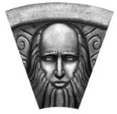 Ishar, Vorin name Ishi
Ishar, Vorin name Ishi
Role: the Priest, also known as the Herald of Luck
Divine Attributes: Pious, Guiding
Ishar’s Vorin name and his number are the same: Ishi, or ten. (They don’t seem to have a zero. Hmm. Given where they are in development, I’m thinking they’d have to have zero by now, wouldn’t they? Maybe not; its actually a fairly advanced mathematical concept. Or maybe they just don’t use the traditional numbering to represent zero.) He’s also known as Ishu and Tashi in some parts of the world. He was older than most/all of the others at the inception of the Oathpact, and is generally depicted as an older man with a full beard. Sanderson has said that to modern Rosharans, he would probably appear to be Shin—which probably means his eyes are rounder than the others. (I’m beginning to think that the epicanthic fold is not merely an evolved trait due to the Rosharan climate, though that’s logically part of its predominance. Why would Ishar and Shalash have noticeably rounder eyes than the others?)
In any case, Ishar is the one who came up with the idea for the Oathpact and figured out how to make it work. Whether he was actually a priest or not, he was definitely the one who understood the functioning of Investiture the best. There are implications, accurate or not, that he may also have been instrumental in whatever arrangement made it possible for Honor and Cultivation to bind Odium to the planet Braize and limit his influence to the Rosharan system; Stormfather tells Dalinar that “Before he was Herald of Luck, they called him Binder of Gods.”
His powers, like those of the Bondsmiths, are Tension (soft axial connection) and Adhesion (pressure and vacuum), but their use by a Bondsmith is vastly different than by a Stoneward or a Windrunner. In fact, Stormfather calls Adhesion by a different name, which we know as a spiritual element in the Cosmere: he calls it Connection. I’ll just leave that there for you to think about.
Current Events: Ishar is currently suffering quite the delusions. He has taken the leadership of the nation Tukar, has named himself their god-priest, and calls himself “Tezim the Great, last and first man, Herald of Heralds and bearer of the Oathpact.” I guess if you’re going to have delusions, you might as well go for the really satisfying ones, right? He seems to have convinced the Tukari that he is a god, anyway, and given his background it seems possible that he’s found a way to access some kind of powers despite leaving his Honorblade with the rest.
Theory Connection: The Priest, normally a servant or representative of a god, now calls himself a god; the man who represented piety and spiritual guidance now defies the actual gods and claims their authority for himself.
Okay, wow. That’s a lot. Again. I probably left out something important, so bring it up in the comments and we’ll talk about it! Thanks for your patience!!
Alice is a Sanderson Beta-Reader, mega-fan, and occasional theory-crafter. She takes great pride in the moment at Emerald City Comic Con 2018 when, in conversation about some disputed fan interpretation of a scene, Sanderson said, “You’re right. Just tell them I said, ‘Alice is always right.’” She is also an administrator of two Facebook fan groups: The Stormlight Archive (spoilers allowed for Stormlight books only; everything else has to be spoiler-tagged) and the Storm Cellar (Sanderson fans loosely centered around the Tor rereads, spoilers for all Sanderson books allowed).










